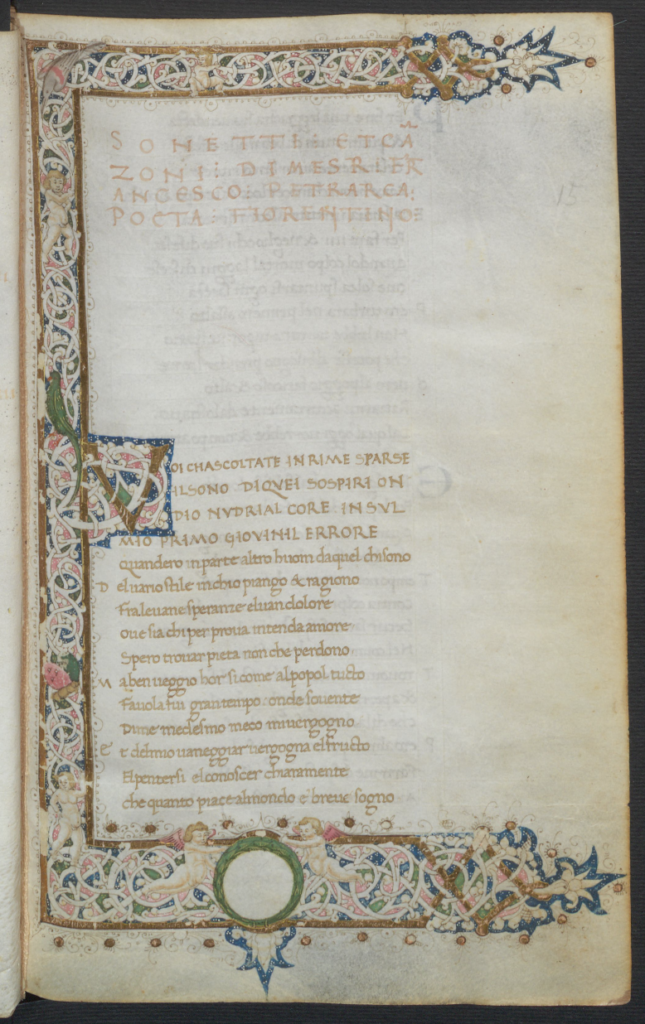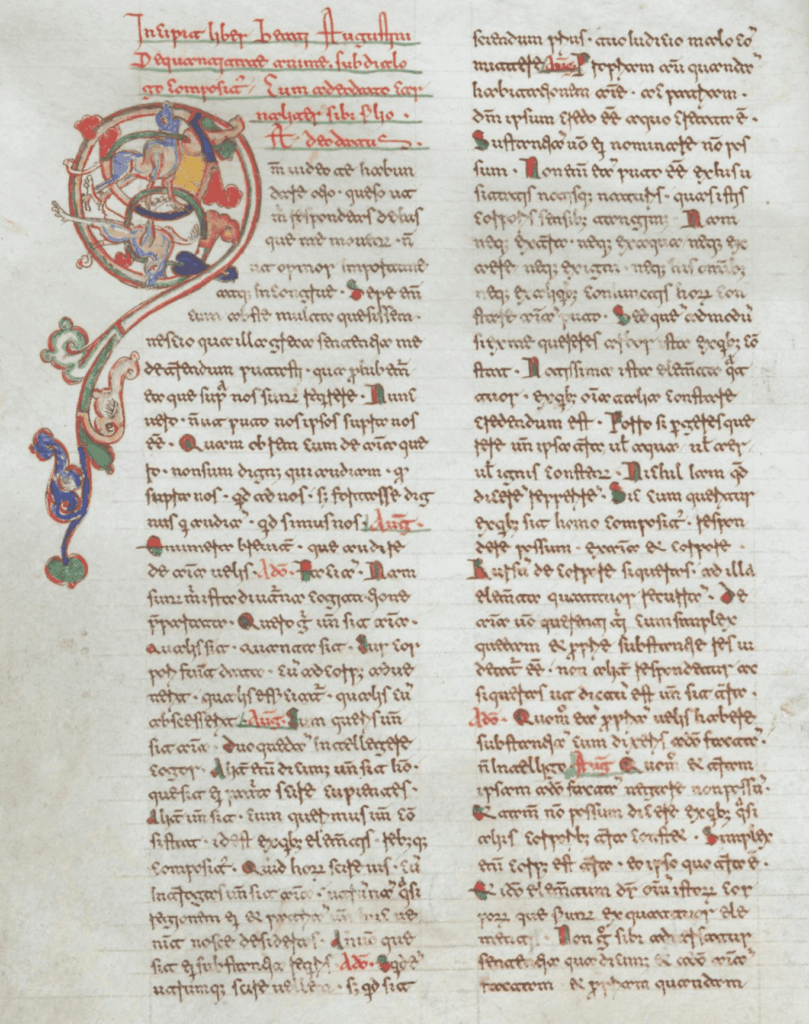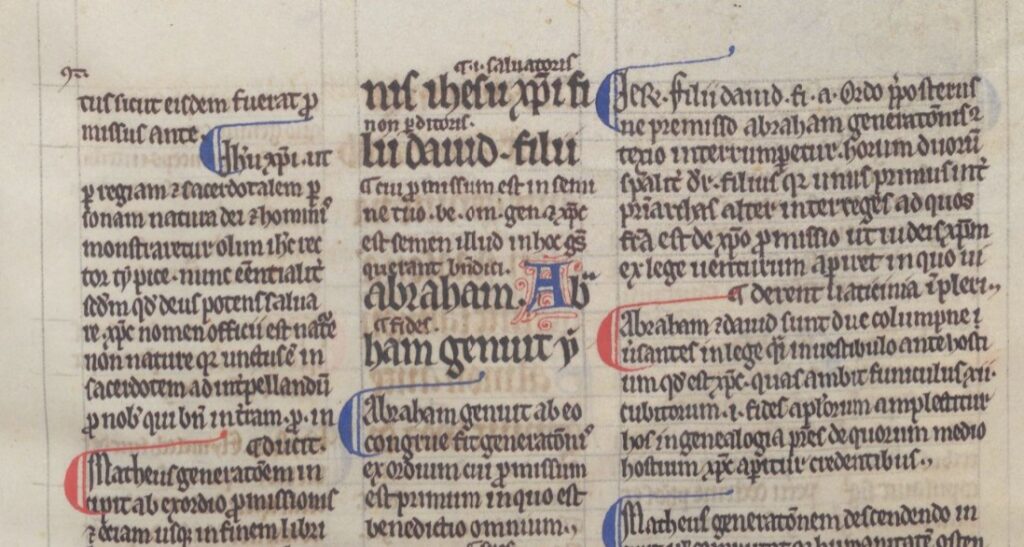Before metadata | Function of metadata
The research theme takes as its starting act the experiments in protocols and formats for digitization, technologies and practices of image description and processing, and web platforms for data dissemination, all declined according to the peculiar nature of the cultural object.
| Dr. Fabio Brandi |
| PhD Course XXXVIII |
| Supervisor: prof. Nicola Tangari |
The focus is on the digitization process, with attention to the treatment of images according to their intended use, descriptive accompaniment, and digital preservation, verifying national and international standards. Attention is also given to a real process of remediation, in which the cultural object is reorganized to be transmitted in and through a new language, the digital one. It is a “transition of state” that involves a series of operations that actively contribute to the reconstruction ofmeaning and involve forms of semantic transformation and a change in context. Central is the role of metadata and standardized descriptive models in determining new forms of accessibility, reading and interpretation. The use of infrastructure such as IIIF highlights how the cultural object can be embedded in a technological ecosystem such that it can be given an unprecedented signifying dimension.
Finally, the research investigates the ways in which technologies, innovations and knowledge are transferred to a broader dimension, to businesses, p.a. and society, according to the instances of Rome Technopole.
Scientific output:
– Brandi, F., & Tangari, N. (2024). Rome Technopole for the digitization of Montecassino manuscripts, “DigItalia,” 19 (2), pp. 143-148.[https://doi.org/10.36181/digitalia-00107]
The fragments in the Beneventan minuscule: Census, Cataloguing and Study of the evidence preserved at Montecassino
| Dr. Chiara De Angelis |
| PhD Course XXXVI |
| Supervisor: prof. Nicola Tangari |
The thesis involved conducting a comprehensive study of the corpus of fragments in Benevento minuscule preserved at Monte Cassino, known as the Compactiones. These consist of 2095 fragments kept in folders and binders summarily organized by content or code of origin, which have hitherto received partial attention. The result obtained is the analytical cataloguing of the fragments, as well as the reconstruction, as far as possible, of the codices to which they can be traced. The work of a reconstructive slant was flanked by a case study investigation, focusing on isolated testimonies of liturgical content, in order to enhance not only their weight in quantitative terms but also their historical-cultural value.
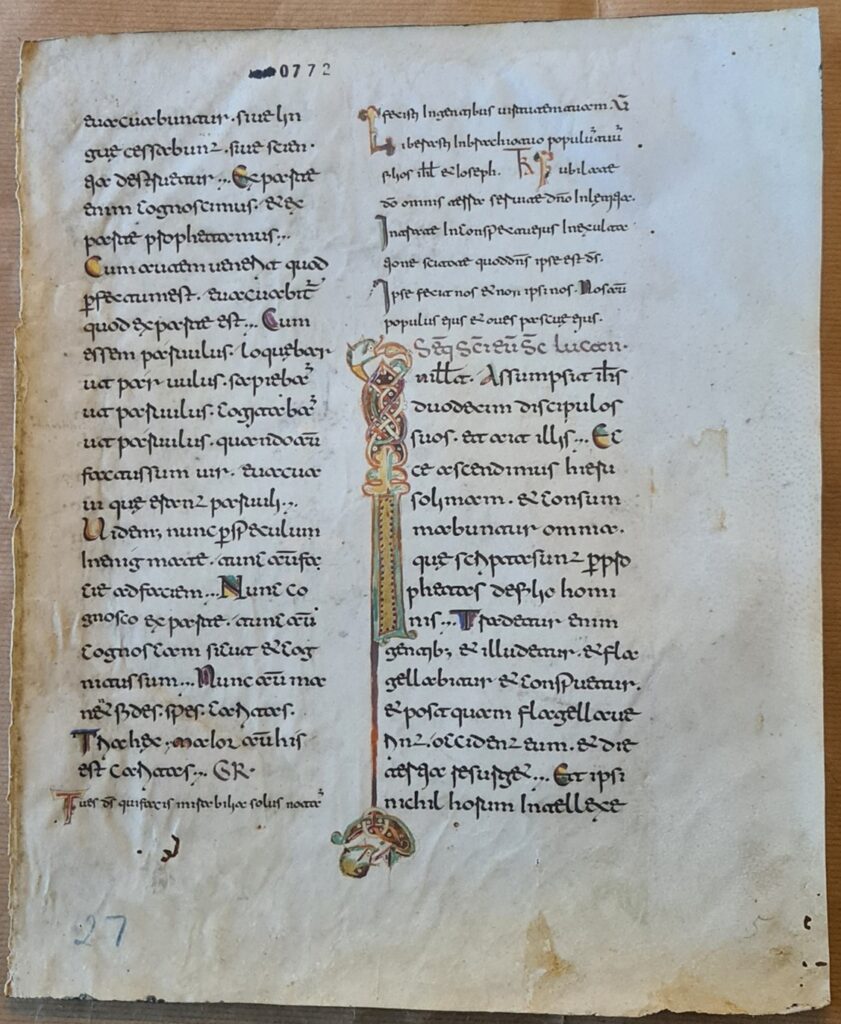
In order to carry out as analytical a survey as possible, the work involved the creation of a database, currently consisting of 3162 entries, containing a census of the total number of fragments in Beneventan. The next phase, on the other hand, involved the perusal of the 2095 fragments of the Compactiones and the identification of the total number of testimonies in minuscule Beneventan, amounting to 1688 pieces. The fragments were then sorted by manuscript of origin and described analytically in a catalog containing reconstructions of 9 manuscripts and 33 case studies relating to isolated testimonies. The proceeding cataloguing opened up an additional field of investigation concerning offsets and small fragments often found on the catalogued fragments. These testimonies have been surveyed in a special database (at present consisting of 500 entries) and subjected to a systematic examination of the contents, the outcome of which has led to the identification of clusters of fragments traceable to manuscripts of which they constitute isolated attestations.
Scientific production:
– De Angelis C., Frammenti di una Bibbia in minuscola beneventana nel fondo cassinese: analisi, ricostruzione, contestualizzazione, in Parola al testo. Percorsi interdisciplinari di critica del testo , Sapienza editrice, Roma, 2023, pp. 71-84.
– De Angelis C., De Angelis F., Nuovi frammenti in minuscola beneventana in legature cassinesi fragments in minuscule , in BMB. Bibliografia dei manoscritti in scrittura beneventana , vol. 31, Viella, Roma, 2023, pp. 35-46.
– De Angelis C. (in press), Tessere di memoria: i frammenti in minuscola beneventana nelle Compactiones, «La Bibliofilia» 71.
– De Angelis C., Dell’Omo M., Monte Cassino, Compactiones, nn. 2004-2023. Ritrovati i “frammenti di codici abbruzzesi” già desiderati da Elias Avery Lowe e Virginia Brown, in BMB. Bibliografia dei manoscritti in scrittura beneventana , vol. 30, Viella, Roma, 2022, pp. 9-43.
– De Angelis C., Ventriglia M., Fragments in Beneventan minuscule: genesi, sviluppi e prospettive di un progetto in fieri, in BMB. Bibliografia dei manoscritti in scrittura beneventana, vol. 28, Roma, Viella. , 2020, pp. 9-18. De Angelis C., Zambardi E. (in press), Reuses of Reuses: The Case of Glossed Biblical Fragments at Montecassino, edited by Cossu A., Zambardi E., Brepols, 2024 (Bibliologia. Elementa ad librorum studia pertinentia, 70).
‘Beyond Inguanez’: The Manuscripts Following No. 600 in the Montecassino Abbey Archive: Summary Cataloguing of the Collection and Detailed Description of the Medieval Codices.
| Dr. Federica De Angelis |
| PhD Course XXXVIII |
| Supervisor: prof. Nicola Tangari |
The ‘Beyond Inguanez’ project aims to continue the cataloguing of the codices of the Archives of the Abbey of Montecassino, undertaken by Mauro Inguanez in the first half of the 20th century, and still unfinished: in fact, ‘only’ the first half of the codices – about six hundred – has flowed into his monumental work Codicum Casinensium manuscriptorum catalogus.
The current research activity involved first of all the perusal of all the manuscripts with a shelfmark above No. 600, in order to reconstruct the exact size of the manuscript book collection of the Benedictine monastery. Subsequently, a campaign of summary description of the entire corpus was launched , in line with the catalographic standards defined by the ICCU (Central Institute for the Unique Catalogue), as well as a further and more in-depth investigation of only the medieval codices(pre-1500 ), by means of catalographic cards of analytical cut.
The project is also oriented towards the application of current digital technologies as essential supporting elements for the knowledge of the library heritage: in fact, description cards are also converging in the MOL(Manus Online) digital platform, and will soon be accompanied by complete digital reproductions of medieval manuscripts. Thus, the research is part of a broader program aimed at the preservation and enhancement of cultural resources by enhancing their accessibility through digital tools, also with a view to social inclusiveness and sustainability.
Scientific production:
– De Angelis C., De Angelis F., New fragments in Beneventan minuscule in Cassinese bindings, in ‘BMB. Bibliography of manuscripts in Beneventan script’, vol. 28, Rome, Viella, 2023.
– De Angelis F., The lesser-known manuscripts of Montecassino, in ‘La Bibliofilia’ 71 (2024), forthcoming.
Tools and Methods for the Preservation and Digitization of Early Printed and Manuscript Books: Regulatory Framework, Current Practices, and Future Perspectives
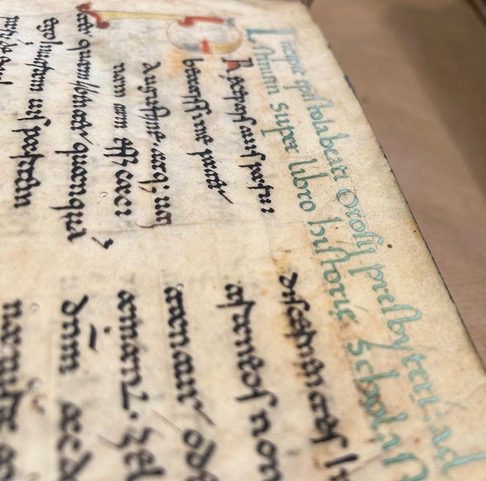
| Dr. Marta Filippini |
| PhD Course XXXVIII |
| Supervisor: prof. Nicola Tangari |
In recent years, with the increase in digitization projects for library collections, there has been a growing need to more clearly define the tools and procedures required for the proper handling and movement of volumes during these activities.
The primary aim of this project is to identify best practices for the digitization and preservation of ancient printed and manuscript books, by evaluating the systems currently used in libraries and considering the various national and international standards for digitizing library collections. The research also includes the development of an assessment form to evaluate the condition of manuscripts and ancient books, as well as the analysis of over two hundred and fifty volumes. Thanks to collaboration with the company New Sintesi Srl, which is co-funding the doctoral grant, prototypes of innovative systems for the preservation and handling of book heritage (such as shelving, protective devices, and handling tools) will be designed and implemented.
The twelfth-century Cassinese manuscripts in Beneventan minuscule: a paleographic and codicological study
| Dr. Roberta Molinari |
| PhD course XL |
| Supervisors: Dr. Nina Sietis, Prof. Nicola Tangari |
The present research project involves the analytical and exhaustive investigation of all specimens in Beneventan minuscule made at Montecassino in the 12th century and preserved in the Abbey Archives. The aim is to help shed light on the book manufacture in the Benedictine coenoby in a rather neglected phase with respect to the aureum saeculum Desiderii: in fact, little studied and poorly documented, the production of codices in the Cassinese scriptorium after the second half of the 11th century still remains largely obscure.
Neither are the volumes in beneventan script an exception.
As a matter of fact, this script, in the type that takes its name from the monastery of Montecassino and that in the 11th century shows its most splendid fruits, was investigated in all its aspects until the specimens made up under the abbots Desiderius († 1087) and Oderisius († 1105), only to cease to attract the interest of specialists. For this reason, therefore, the current research focuses its attention specifically on the corpus of beneventana artifacts set up in the post-Oderisian Cassinese scriptorium. The main objectives are as follows: to offer, of the selected witnesses, as complete an analysis as possible from the paleographical, material, textual and historical points of view; to specify their chronological placement, which is often uncertain and debated; to reconstruct the organization of the work of the monk-copists and to identify recurring motifs in the techniques of manuscript making in the period of interest; and to scrupulously investigate the evolution of Cassinese beneventana in its last stages, for which only a few generic traits of deviation from the canon have been reported so far.
The glossed Bible at Montecassino: between reception and appropriation. Historical and codicological study
The research analyzes a corpus of 55 glossed Bibles preserved at the Abbey of Montecassino and produced between the 12th and the end of the 13th century. These manuscript witnesses are a key resource for investigating the processes of reception and appropriation of the glossed Bible within an important medieval monastic center.
| Dr. Elvira Zambardi |
| PhD course XXXVI Southern High School / École Pratique des Hautes Études |
| Supervisors: Marco Cursi, Marilena Maniaci, Martin Morard |
The study adopts a codicological approach, culminating in the creation of a catalog intended to provide valuable insights into the practices of reception and appropriation of the glossed Bible in the Cassinese context and, more broadly, in southern Italy. The findings reveal that 75 percent of the codices analyzed are of Italian origin, while a significant portion derive from transalpine ateliers, with a predominance of French scriptoria. The research also highlights heterogeneity in mise en page, copying strategies and textual transmission modes, illustrating adaptation to the new manuscript models spread from northern Europe. Particular attention was paid to a few notable specimens, such as Casin. 235, the only direct Cassinese witness of the Glossa media to the Pauline Epistles, and Casin. 264, the only manuscript in the subscribed corpus, copied between 1166 and 1167 by a copyist identified as Ferro.
Scientific production:
– De Angelis, C. – Zambardi, E., Reuses of Reuses: The Case of Glossed Biblical Fragments at Montecassino ; in Uses and Reuses of medieval Manuscript Books. Southern Italy. Latin Manuscripts / Uses and Reuses of the Manuscript Book in the Middle Ages. Southern Italy. Latin manuscripts , edited by Cossu, A – Zambardi, E., Brepols 2025 (Bibliology 71). [in preparation].
– Morard, M. – Zambardi, E., Le manuscrit Casin. 235 et son matériel paratextuel : un témoin de la Glossa media sur les Épîtres pauliniennes entre tradition et innovation in La memoria scritta di Montecassino, edited by Maniaci, M., and Tangari, N., «La Bibliofilia», CXXVI (2024) [in press].
– Zambardi, E., The glossed Bibles preserved at Montecassino: research in progress, in «Gazette du Livre Médiéval», 66 (2020), pp. 142-151, 2022.


